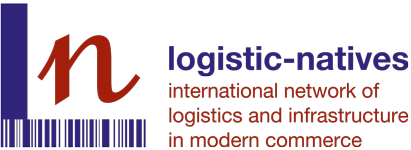The next digital disruption: Reform of EU VAT legislation – ViDA, Part 2: Digital Reporting Requirement and e-Invoicing

On 8 December 2022, the European Commission adopted a #package to #optimise the EU’s Value Added Tax (#VAT) system. This is highly relevant for #ecommerce and may potentially lead to further #disruptions in #logistics and #retail.
#ViDA brings three major #changes:
1) Real-time #digital #reporting of all #transactions (e-Invoicing)
2) OSS 2.0 – single VAT #registration (#ID) across the EU
3) IOSS 2.0 – #IOSS becomes mandatory for all #B2C #supplies imported to EU
𝗖𝗵𝗮𝗻𝗴𝗲 𝟭):
𝗠𝗮𝗻𝗱𝗮𝘁𝗼𝗿𝘆 𝗗𝗶𝗴𝗶𝘁𝗮𝗹 𝗥𝗲𝗽𝗼𝗿𝘁𝗶𝗻𝗴 𝗥𝗲𝗾𝘂𝗶𝗿𝗲𝗺𝗲𝗻𝘁 (𝗗𝗥𝗥) 𝗳𝗼𝗿 𝗩𝗔𝗧 𝗽𝘂𝗿𝗽𝗼𝘀𝗲𝘀 𝗳𝗼𝗿 𝗮𝗹𝗹 𝗰𝗿𝗼𝘀𝘀-𝗯𝗼𝗿𝗱𝗲𝗿 𝘁𝗿𝗮𝗻𝘀𝗮𝗰𝘁𝗶𝗼𝗻𝘀 / 𝘀𝗵𝗶𝗽𝗽𝗶𝗻𝗴 𝘄𝗶𝘁𝗵𝗶𝗻 𝘁𝗵𝗲 𝗘𝗨
According to the EU VAT GAP report which estimates the overall difference between expected VAT #revenue and the sums actually collected, EU Member States lost an estimated €93 billion in Value Added Tax (#VAT) revenue in 2020, mainly due to #taxfraud and evasion.
The EU’s actionplan focuses on fully digitalising all transactions, making every transaction #transparent and traceable so that taxes can be collected correctly and items checked for #compliance. With respect to ecommerce, the EU VAT #Ecommerce package has made Electronic Advanced Data (#EAD) mandatory for all consignments imported into the EU for clearing at item level (#customs). To date, there has been no comparable transaction-based #digital traceability for cross-border ecommerce #shipments within the EU. The #standard has been monthly/quarterly recapitulative #statements, making VAT #fraud comparatively easy. The EU #Commission now intends to close this gap.
𝗧𝗵𝗲 𝗻𝗲𝘄 𝘁𝗿𝗮𝗻𝘀𝗮𝗰𝘁𝗶𝗼𝗻-𝗯𝗮𝘀𝗲𝗱 𝗺𝗼𝗱𝗲𝗹 – 𝘁𝗵𝗲 𝗗𝗶𝗴𝗶𝘁𝗮𝗹 𝗥𝗲𝗽𝗼𝗿𝘁𝗶𝗻𝗴 𝗥𝗲𝗾𝘂𝗶𝗿𝗲𝗺𝗲𝗻𝘁 (𝗗𝗥𝗥) – 𝗶𝘀 𝘀𝗰𝗵𝗲𝗱𝘂𝗹𝗲𝗱 𝘁𝗼 𝗲𝗻𝘁𝗲𝗿 𝗶𝗻𝘁𝗼 𝗳𝗼𝗿𝗰𝗲 𝗶𝗻 𝟮𝟬𝟮𝟴.
It includes:
· The Standardised European e-Invoicing Norm (#EN) with its structured #electronic format which will become the #mandatory default system for issuing invoices (including ecommerce)
· #Development of an EU #database for the #exchange of information on intra-community VAT transactions (based on VIES – the central VAT Information Exchange System)
· The subset of #data elements #mandatory for e-Invoicing must be submitted to the local tax authority by the supplier and acquirer (day of transaction)
· The #local #tax #authority sends the #data to central VIES within 24 hours
· VIES crosschecks transactions, reported #supplies and #acquisitions, to ensure compliance and detect fraud
· The data format is based on a European Norm and is interoperable
· Domestic #DRR will become optional for Member States and will follow the DRR #model
(𝘛𝘰 𝘣𝘦 𝘤𝘰𝘯𝘵𝘪𝘯𝘶𝘦𝘥)
Click here for the LinkedIn-Article.

Walter Trezek
Document Exchange Network GmbH

